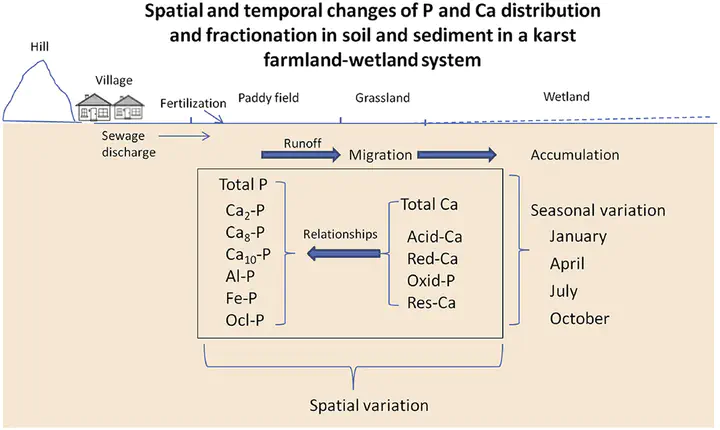Spatial and temporal changes of P and Ca distribution and fractionation in soil and sediment in a karst farmland-wetland system

Abstract
Phosphorus (P) is a critical element affecting eutrophication in aquatic ecosystems. Its availability is closely related to calcium (Ca) in calcareous soils and sediments, but their relations are unclear. In this study, the spatial and temporal changes in P and Ca fractionation and distribution in a karst farmland-wetland ecosystem were investigated. The results showed that total P concentrations were 1.25–3.19 g kg−1, with higher concentrations in paddy soil than in sediment. Total Ca concentrations were 3.93–10.2 g kg−1, with higher Ca being accumulated in sediments than in soils. The P fractionations varied seasonally, with Ca-bound P being dominant. The moderately-stable Fe/Al-bound P showed temporal variation, while Ca was dominant in acid-soluble fraction, both probably playing an important role in controlling P availability. Correlation analysis showed seasonal relation between Ca and P distribution in soil/sediment. This study suggests that P migration from farmland to wetland may be a major source for P accumulation in sediments in a karst farmland-wetland system.